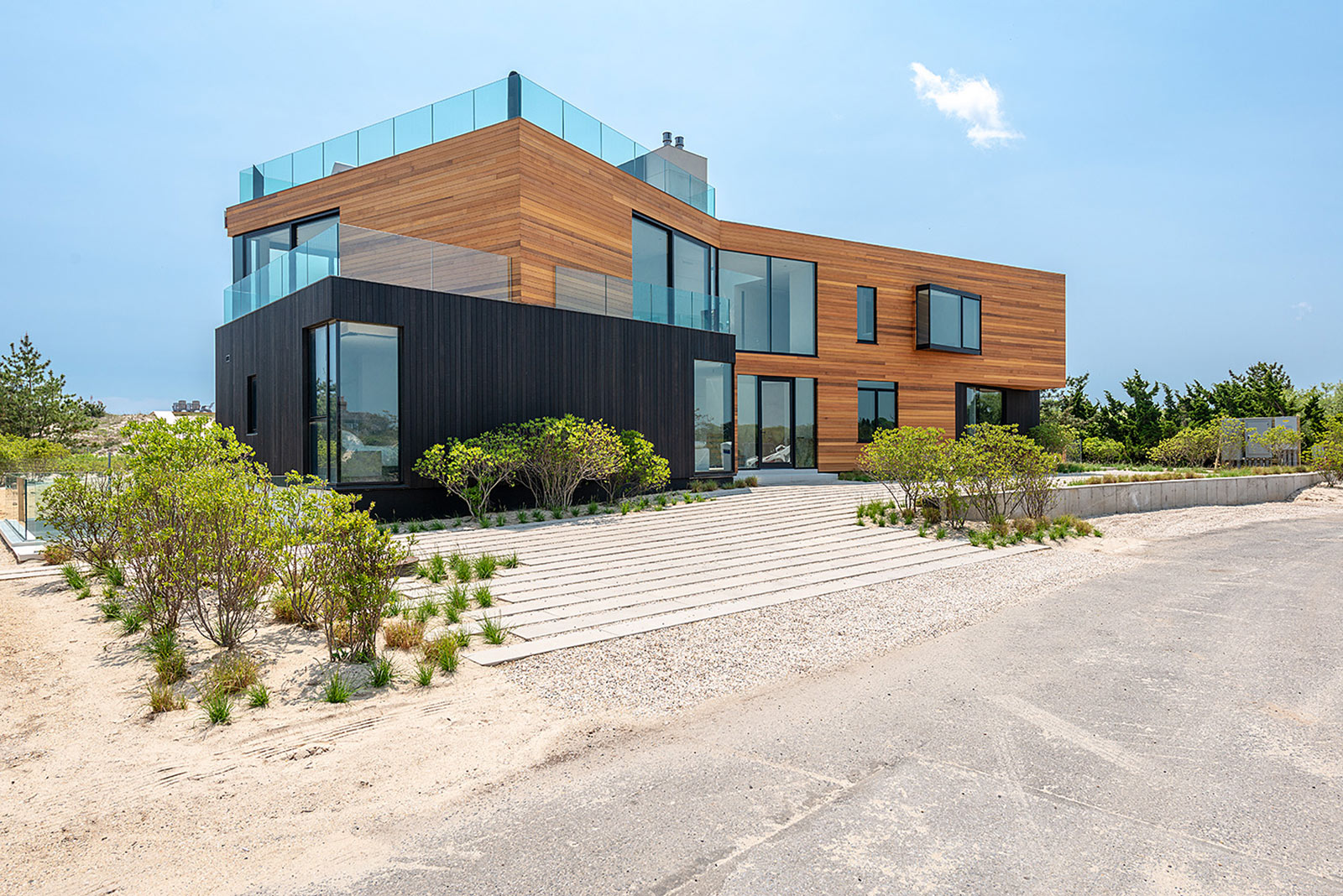The house is set within a low-lying landscape of wind-stunted pines, dune grass and bayberry. The challenge was to make a 5,280-square-foot house feel like an 8,000 square foot house. Local zoning codes on the half-acre lot didn’t allow for anything larger. It’s called the “Bow Tie House” because the floor plan is pinched in the middle and flares out at either end––west to east––but to be precise, it’s really two bowties stacked asymmetrically on top of one another, one being black, the other being a pale wood color. The lighter of the two volumes is made from naturally treated cedar. The darker volume is vertically clad in charred shou-sugi-ban cedar, a traditional Japanese method of sealing wood to prevent weathering. The blackened walls act as a shadow-like background to offset the lighter walls. The inwardly angled “bow tie” facades echo the natural contours of the oceanfront site while maintaining privacy, channeling views away from neighboring houses and out towards the water. The salt-and-pepper volumes intersect in a vertical relationship: the black volume rising up at the western end; the pale-wood section dipping down to emphasize the street-side entry, while a central chimney mass rises up through the narrow mid-section and anchors the colliding geometries, making the house feel larger and more complex than it actually is. A hovering staircase (steel and glass with slab-like treads of white oak) rises up from the light-suffused foyer and leads to the main living-dining area which was placed on the upper level, along with the master bedroom suite and two kids’ bedrooms, high enough to capture ocean views and breezes.

